|
Getting your Trinity Audio player ready...
|
The onslaught of evidence in the murder trial of Gregorio M. Leon kept coming on Wednesday morning as prosecutor Suzanne Mayes called another South Carolina State Law Enforcement Division (SLED) expert witness to the stand to bolster the state’s case against the prominent restaurateur.
SLED lieutenant Britt Dove is an expert in digital forensics who supervises computer crimes investigations at the agency. He is best known for presenting cell phone extraction data during the double murder trial of convicted killer Alex Murdaugh earlier this year.
Dove began his testimony by explaining to the jury that he generated a “reader report” from the phones examined in this case. This comprehensive extraction could fill “thousands” of pages if printed, he said, but it also allows for the creation of highly specified Cellebrite extraction reports. These reports help narrow the focus of the data so investigators can filter out irrelevant information.
(Click to view)
(Via: Dylan Nolan-FITSNews)
With the crucial cell phone data admitted into evidence, the jury learned that Rachel Leon (wife of accused shooter Greg Leon and lover of Arturo Bravo, the victim of this homicide) used an iPhone application called KeepSafe to store photographs behind a password protected barrier.
After an overruled objection to their admissibility, the hidden photos were presented to the jury. The first of the batch depicted Bravo and Rachel Leon posing in Charleston, S.C.
This photo was also texted to Rachel Leon by Bravo, who went by “AVI” in her phone. The words “Te Amo” (I love you) were written on the photograph.
(Via: Dylan Nolan-FITSNews)
(Via: Dylan Nolan-FITSNews)
Rachel’s trove also contained a photo of the couple together in bed – along with selfies Bravo had sent her.
In another image, the couple posed proudly at the Dick Dyer Toyota dealership in front of the $40,000 Toyota Tundra Rachel purchased for Bravo – sporting wide smiles. Little did they know that just days later they would come under a hail of gunfire in that vehicle.
The cell phone extraction further showed Rachel and Bravo sharing posts with one another publicly on Facebook and exchanging multiple messages.
The jury saw that Bravo and Rachel exchanged kissing emojis in the the hours leading up to the shooting, which occurred shortly after 8:00 p.m. EST on Valentine’s Day in 2016. Bravo sent a photo of himself smiling and wearing a multicolored sweater – the same sweater found in the front seat of of his truck by authorities after his death.
In the hour-and-a-half leading up to the shooting, Rachel Leon communicated via cell phone with both her husband and her lover. At 7:14 p.m. EDT, she had a minute long call with Leon. Three minutes later she texted Bravo saying “Amor ya bente” (love, come now). Bravo responded “Ok”.
Leon called his wife at 7:46 p.m. and 8:08 p.m. EDT – she picked up neither of his calls, nor a subsequent call from “San Jose 1” at 8:13 P.M.
After building on the timeline established yesterday, eleventh circuit solicitor Rick Hubbard called corporal Nic Beza of the Lexington, S.C. police department to describe the department’s search for the murder weapon.
Two days after the killing, Beza and his colleagues served a search warrant at the San Jose restaurant on Route 1 in Lexington, S.C. to collect video footage and attempt to find the murder weapon.
While no weapon was found, video footage of Leon at the restaurant on the night of the shooting was retrieved. Beza told the jury officers noted Leon looking at his cell phone immediately before running to his car to find his wife.
(Click to view)
(Cpl. Beza – Via: Facebook)
Solicitor Hubbard asked judge Walton J. McLeod IV for permission to recall the witness later in the day, and veteran defense attorney Jack Swerling consented – agreeing to defer his cross examination.
The state then called Marc Miramontes, a crime scene investigator who has worked for the Lexington police department for 23 years.
On the night of the killing, Miramontes was dispatched to San Jose restaurant on Route 1 to locate Leon. This location served as the restaurateur’s headquarters, and was seen as a good place for officers to start since his whereabouts and intentions were unknown in the hours after the killings.
(Click to view)
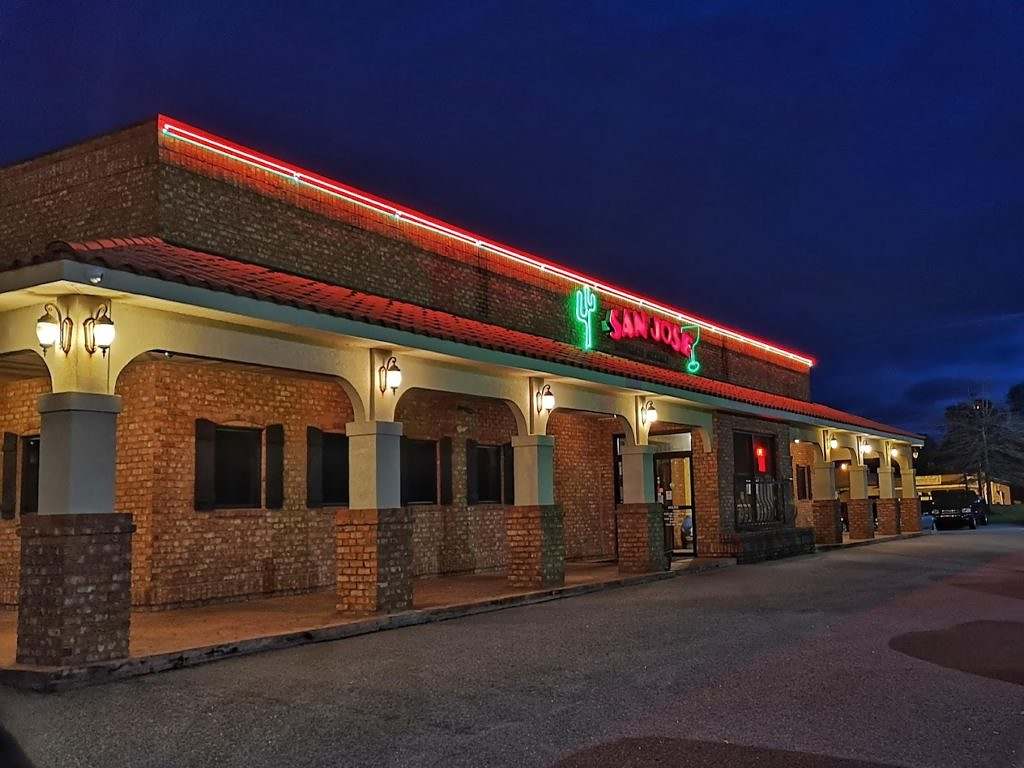
(San Jose Route 1 Location – Via: 986Nick/Google)
The department later learned Leon would turn himself in after being contacted by attorneys Dick Harpootlian and Eric Bland. This freed Miramontes up to make the ten-minute drive back to the scene in order to speak with Rachel Leon. As one of the force’s Spanish speakers, Miramontes conducted a conversation with her and told the court he did not “see any signs of force or coercion” in her relationship with Bravo.
Later that evening, Leon drove himself to Lexington police headquarters in the same black Range Rover he used to flee the scene only hours earlier. In a subsequent search of the vehicle, Miramontes found an empty holster as well as a cell phone tucked between the vehicles steering wheel and gauges.
The cell phone was submitted to SLED for extraction. Its contents may be entered into evidence later in the trial.
Search warrants were written as investigators continued their hunt for the weapon and other evidence. Officers searched Rachel Leon’s Mercedes, obtained the couple’s Facebook records, and subpoenaed GPS tracker manufacturer Spireon.
Prosecutors next published the San Jose restaurant CCTV video for the jury. The security camera showed Leon using his cell phone for several minutes in the lobby of the restaurant on the night of the shooting. “For some reason he gets up in a hurry” after seeing something not visible to the camera on his cell phone, prosectors noted.
That reason was revealed when the state published a user activity report which documented Leon accessing the GPS tracking app at 8:12 p.m. EST, the same time the video evidence showed him rapidly leaving the San Jose lobby.
(Click to view)
(Via: Dylan Nolan-FITSNews)
Mayes next asked Miramontes a series of questions about the video of the shooting, drilling with greater specificity into the timeline of events than prosecutors had yesterday.
This specificity seemed intended to regain some of the ground lost during Swerling’s withering cross examination of Lexington police lieutenant Brent Carter yesterday.
Though Swerling sowed seeds of doubt about what investigators could glean from the low resolution video, Miramontes’ confidence after having seen the footage dozens of times appeared to re-affirm the tape’s evidentiary value.
Swerling’s barrage sought to make it clear that Carter (who wasn’t tasked with doing a deep analysis of the recording) didn’t know exactly what happened in the cab of the vehicle. Miramontes pointed to a part in the tape where movement in the back of the vehicle was visible – noting that this same movement pattern wasn’t seen prior to Leon firing. He also noted that he couldn’t see either of the truck’s occupants reach into the front of the vehicle.
Importantly, Miramontes showed jurors that Bravo opens the door of the truck, but that the rear door of the truck on the opposite side is opened before he fired his first shot.
Was Bravo trying to escape? Was his wife? It is unclear. Jurors will almost certainly search for an answer to this question as the trial continues.
(Click to view)
(Via: Dylan Nolan-FITSNews)
When court gaveled back into session after lunch, Swerling opened his cross-examination by asking Marionettes about a one-minute discrepancy between the time the 9-1-1 call was placed on his report, and when it was documented in another exhibit.
Swerling returned to his practice of drilling into investigatory errors, asking why Miramontes’ report indicated that Leon’s son Gregorio M. Leon IV had been tested for gunshot residue even though this test was never performed on him.
“You made a mistake on this?” Swerling asked.
“I did,” Miramontes replied.
“It was not correct?” Swerling continued.
“Correct” Miramontes affirmed.
Swerling then returned to the topic of Bravo’s false identification. Bravo, an illegal alien, was found with only false identification and credit cards. Police initially assumed this identity was legitimate, but eventually discovered Bravo’s true identity.
“Would you normally investigate why someone used an alias?” Swerling asked.
Marionettes replied that this was typical, but not done in this case. Swerling asked why it wasn’t looked into in this instance, Marionette couldn’t recall, and was next battered over why Bravo’s fingerprints were on record for a previous arrest.
(Click to view)
(Via: Dylan Nolan-FITSNews)
Swerling next picked apart Marionettes’ interaction with Rachel Leon, asking why he didn’t make a note of what time Rachel exited the back of the Tundra after the shooting.
The exact moment of her exit was blocked from the view of the camera by Rachel’s car, an immaterial detail, but one Swerling used to lead Miramontes into admitting that the back of the vehicle was not visible.
Swerling projected a still image of the scene, asking if once the front passenger door of the truck was closed, the interior of the front was visible.
Miramontes said it wasn’t, calling into question his earlier observations about movement in the interior of the vehicle. Swerling capitalized on this lapse.
“Let me ask you, what activity do you see in the back seat of the car before the door is opened… nothing, correct?” Swerling asked.
“Correct,” Miramontes replied, begrudgingly.
“So your determination of what is going on in the car is speculation?” Swerling said.
“No sir, you can see it on the video” the investigator retorted defiantly.

***
“So your testimony then is this: You could not see what was going on in the back seat before or after the shooting?” Swerling asked.
“That is correct,” Miramontes replied.
Swerling continued applying pressure.
“If that is correct, how could you possibly determine that (Bravo) moved his arm?” he asked. “Your testimony earlier was maybe a little misleading? You cannot say he did not move to the front seat with his arm, you didn’t see him.”
The questions (which sounded more like pronouncements) just kept coming:
“You don’t know what time Arturo Bravo fell to the ground, if thats how he got there?” Swerling asked. “You don’t know who exited the vehicle first?”
Swerling then inquired about the dinner the Leon family shared at Carrabbas Italian Grill on the evening of the murder.
“You are aware of the fact that while the Leon family was having dinner at Carrabbas, Arturro Bravo called multiple times?” Swerling asked. “Are you aware of the fact that she went to the women’s bathroom to return the call?”
Rachel Leon returned Bravo’s call from the restroom where she proposed a location for their rendezvous later that evening.
It is unclear why Swerling emphasized Bravo’s blatant intrusion into the family’s dinner, after all, it is the defense’s contention Greg Leon was unaware of Arturo Bravo at the time of the shooting. This makes sense – if it were any other way the shooting would clearly be premeditated murder – but this theory is beginning to be strained by the facts of the case.
Will jurors believe that despite phone calls during family meals, public social media interactions, Leon’s installation of a GPS tracker, and the recent purchase of a $40,000 truck Leon was truly unaware of what he was likely to encounter as he sped to find his wife on the evening of the shooting?
(Click to view)
(Via: Dylan Nolan-FITSNews)
Mayes’ redirect sought to dress some of the fresh wounds dealt by the defense – beginning by addressing the discrepancy in the 9-1-1 call. She attributed it to a computer system being off by “a matter of seconds.”
She then addressed Bravo’s immigration status and ID, asking Miramontes if it were common for illegal immigrants to use a false name to obtain work. According to Miramontes, Bravo worked in construction, a field where many illegal immigrants use aliases to get work.
Part of the alias confusion, the set of fingerprints investigators tied back to a traffic stop, was revealed on redirect to be associated with an arrest for operating a vehicle without a license.
Mayes then returned to the video of the shooting.
“Regarding what we see here on the video, when you spoke earlier about seeing some movement before the Range Rover arrived, what area of the vehicle specifically are you talking about?” she asked.
Miramontes used a green laser pointer to illuminate the A-pillar of the Tundra on the projector screen, adding that the “center console area” was also visible prior to Leon’s arrival.
“Did you see any movement other than the movement of the gun?” Mayes asked.
“No” Miramontes replied.
Did the jury interpret Sterling’s bombardment as the exposition of material weaknesses in the state’s case – or as an attorney brow-beating a witness on technicalities? Only time will tell.
After Miramontes, solicitor Hubbard called Doug Lee, a former Lexington police detective who conducted a search warrant on Leon’s house. At the time of the search, Leon’s attorneys hadn’t yet led to the police to the location of the murder weapon.
While the gun wasn’t discovered, Lee found a half empty box of Hornady .38 special revolver ammunition.
Once the bullets were introduced into evidence, the state had no further questions of Lee – and after Swerling asked him if a search of Bravo’s house had been conducted (it hadn’t) he was free to go.
Officer Beza was then recalled to the stand.
(Click to view)
(Via: Dylan Nolan-FITSNews)
Beza recounted searching Rachel Leon’s white Mercedes-Benz GL350. Upon opening the SUV’s hood he testified to finding “an extra device that I did not believe was a part of the vehicle.” Beza traced a wire back to a small back box tucked into the engine compartment.
Beza didn’t know exactly what is was, but saw that it had a sticker with an IMEI identification number which allowed officers to confirm that the box was indeed a tracker. This device was shown to the jury and entered into evidence.
Beza also accompanied attorney Bland on the mission to retrieve the weapon after Leon disclosed its location to his attorney. The weapon was discarded 25 feet back from the road on a piece of property next to the Fatz restaurant off of Augusta Road in Lexington, S.C.
The gun, a black five cylinder revolver, was located near a pond on the property on February 18, 2016.
(Click to view)
(Via: Dylan Nolan-FITSNews)
Continuing their exposition of the details about the gun, the state then called pawn shop proprietor Jay Friedman, whose store sold Mr. Leon the Smith and Wesson revolver that fatally wounded Bravo. After testifying to the fact that Leon bought the gun, Friedman was released without cross examination.
The state’s final witness for the day was SLED forensic firearms examiner James Green.
“What do you do when you get a firearm, and you have casings?” Hubbard asked.
According to Green “the job of a forensic firearm examiner is to find a common origin” – to link the evidence found on the crime scene to a weapon suspected to have been used in a crime.
Hubbard asked Green what kind of projectiles a .357 revolver like Leon’s can fire. Green informed the jury this kind of weapon is capable of firing both .357 magnum (a highly powerful round) and .38 special (a more controllable but less powerful load).
After projecting detailed photos of all four fired rounds Hubbard asked if the rounds have any identifying characteristics. Green told the jury that “when firearms are manufactured tiny microscopic defects are left inside inside of those barrels” and that those defects are “transferred into the rounds as they leave the barrel.”
One of the rounds had a more obvious defect, its rear was crushed, James suggested this may indicate the round ricocheted instead of directly impacting its target, another looked almost unfired.
On cross examination the defense focused on the bullet found on the pavement behind the Mercedes. The round was severely crumpled, and Green was not able to conclude definitively that the round was fired by Leon’s revolver.
Perhaps the most interesting development of the day for me personally occurred during the mid-morning break. As trial attendees congregated outside of the courtroom, catching up on text messages or heading to the restroom, Leon approached me with a yellowed copy of the Latino newspaper dated “Febrero 6, 2004.”
A rough translation of the article he showed me is reproduced below …
(Click to view)
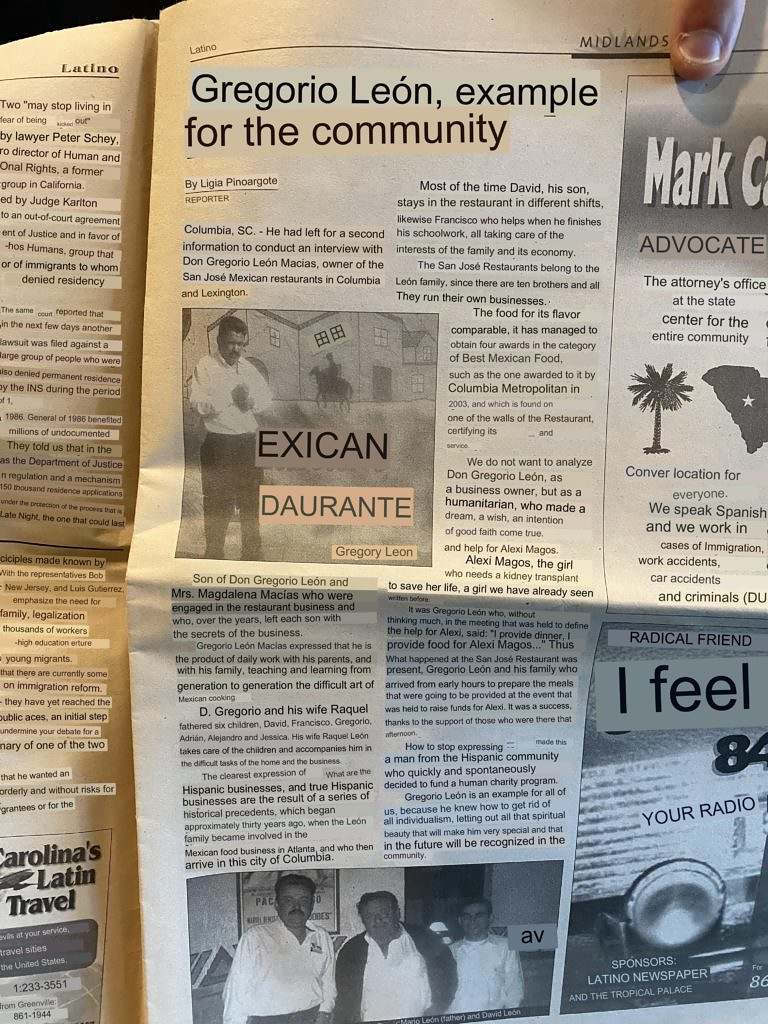
(Via: Dylan Nolan-FITSNews)
As I’ve previously noted, Leon has been hailed by some as a pillar of his community. What bearing that will have on his criminal proceedings remains to be seen, though.
Stay tuned to this news outlet for additional in-depth coverage of the Greg Leon murder trial as it heads into its fourth day on Thursday June 22, 2023.
***
ABOUT THE AUTHOR
Dylan Nolan is a journalist and video producer for FITSNews. He graduated from the Darla Moore School of Business with a bachelors in Accounting in 2021, and has spent his professional career attempting to shine light on corruption and institutional failure in South Carolina through his journalism. Got a tip or story idea for Dylan? Email him here. You can also engage him socially @DNolan2000.

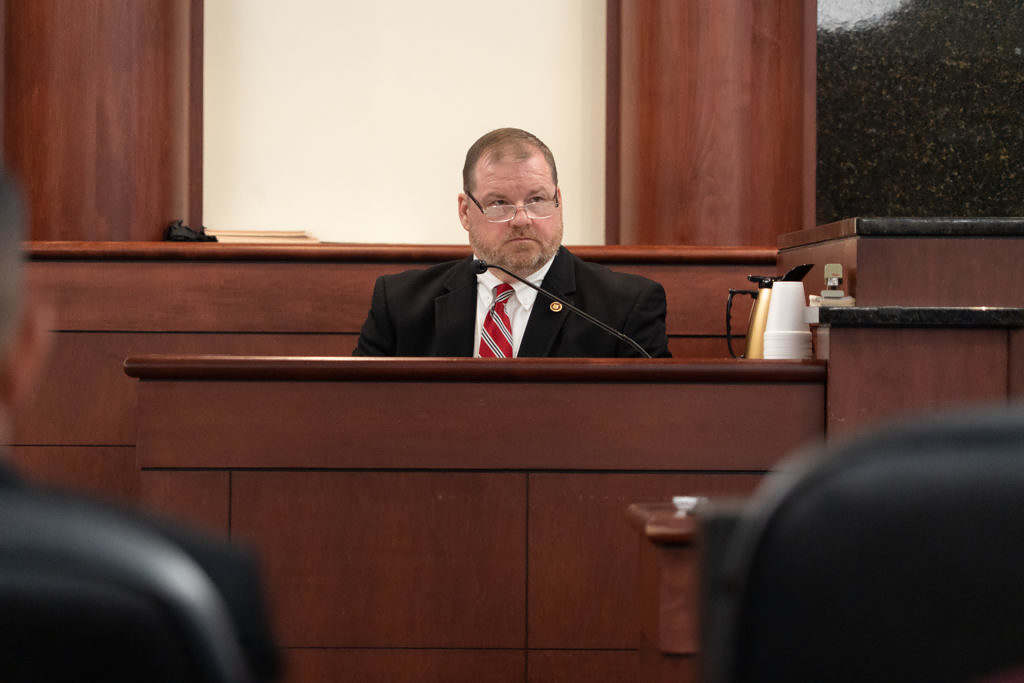
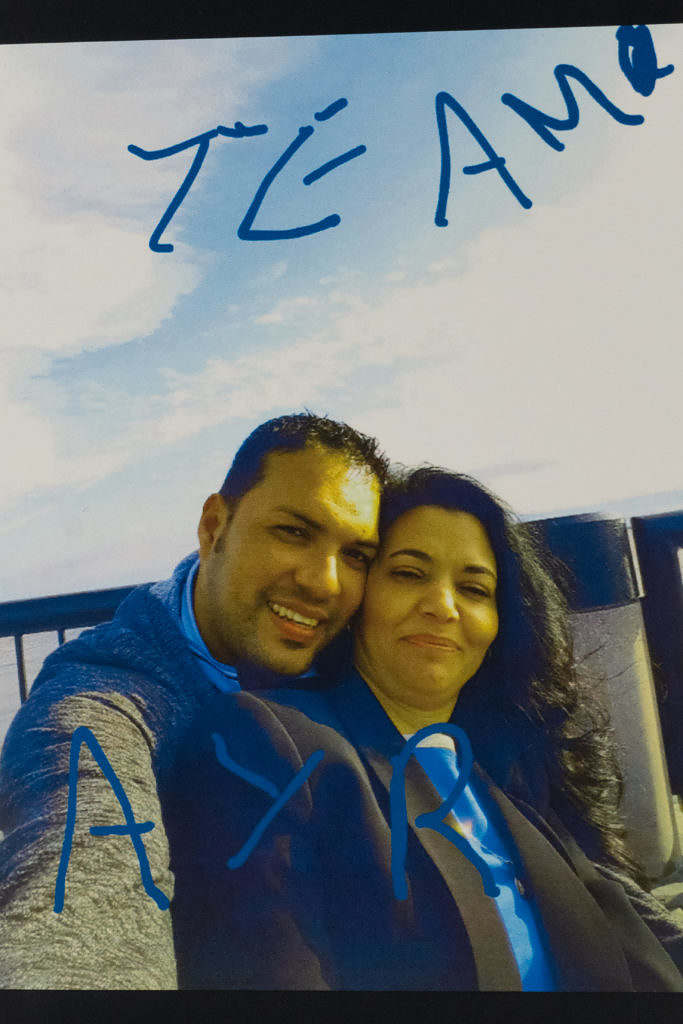

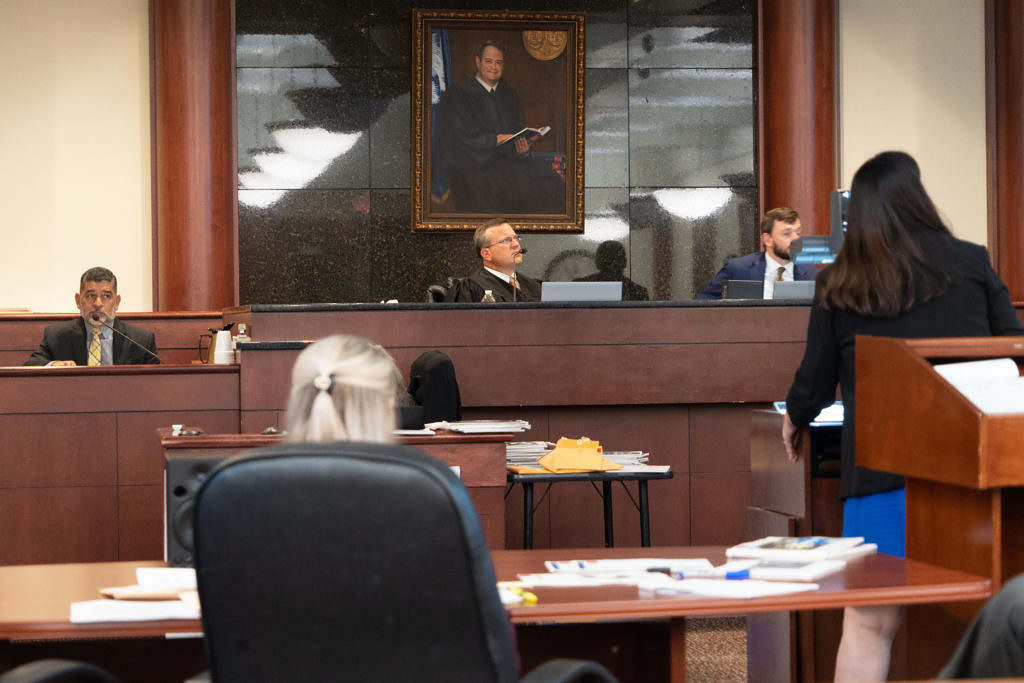


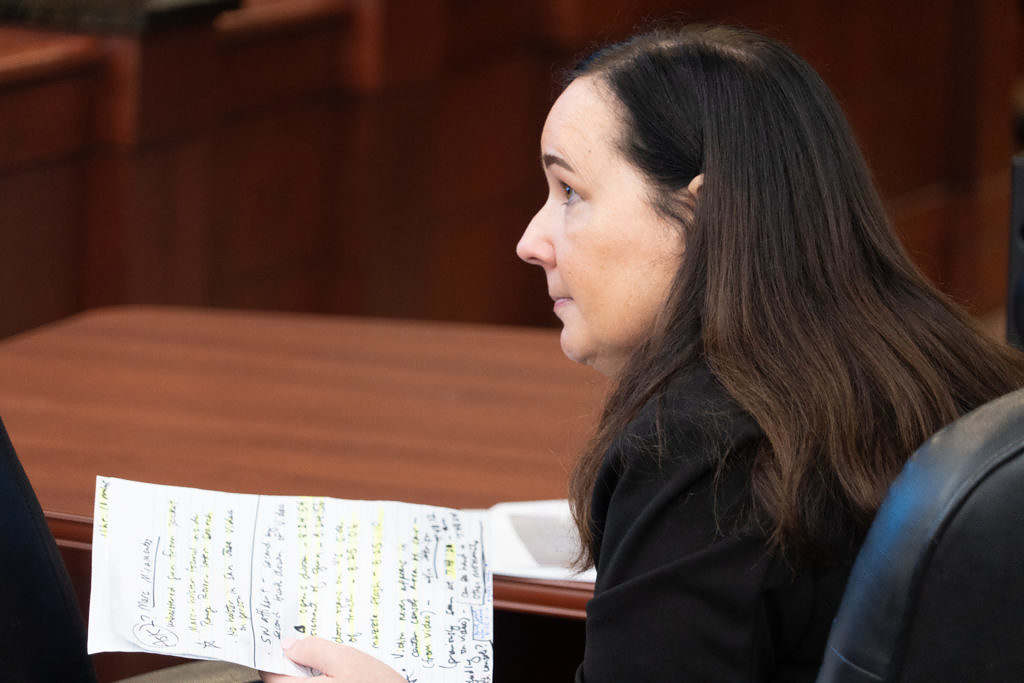

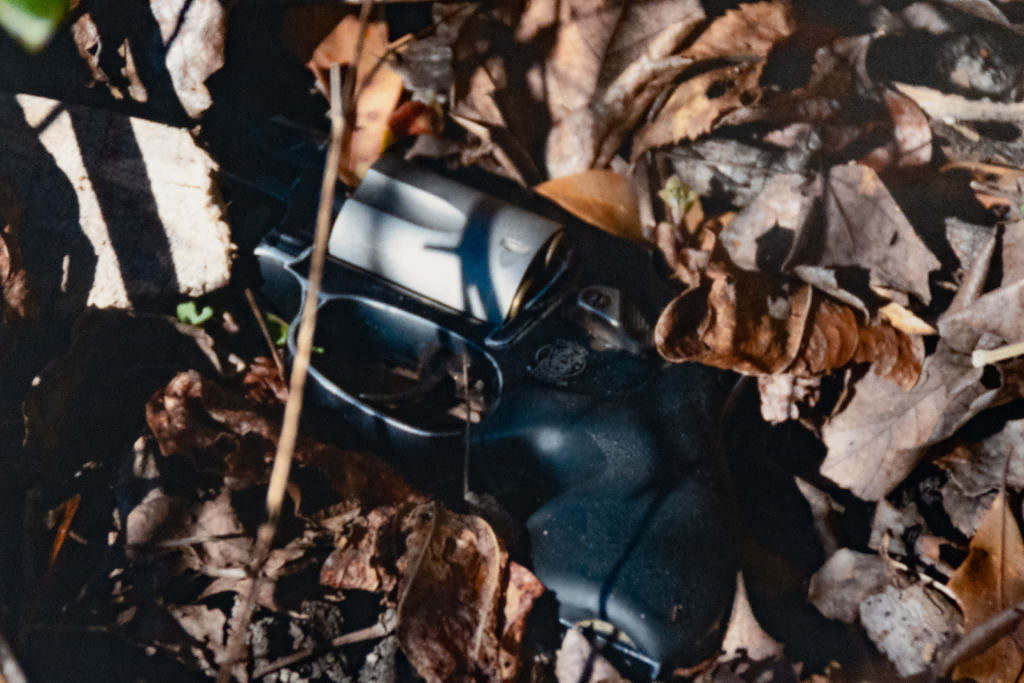

2 comments
Your timeline thingy up there is rather confusing..What does “and rude” mean?
“and ride” sorry.. Autocorrect!